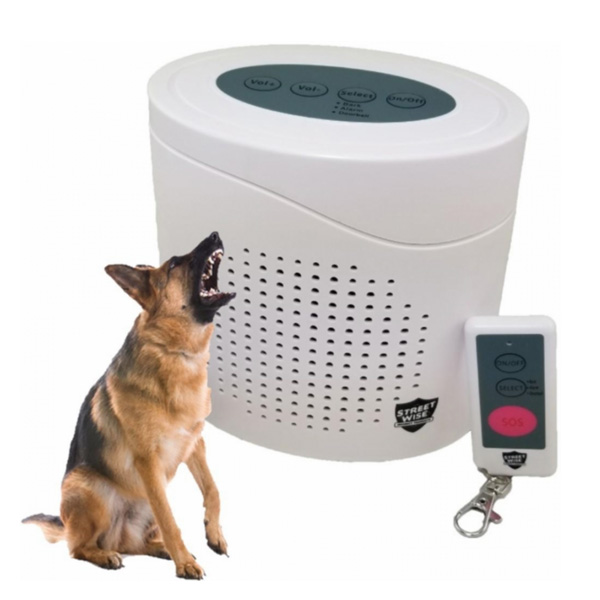Is your furry friend’s constant barking driving you up the wall? If you’ve ever found yourself desperate for some peace and quiet, you’re not alone. Excessive barking can be a nuisance and a source of stress for both you and your neighbors. But fear not, there are effective strategies to curb this behavior and restore harmony in your home.
In this blog, we will delve into practical and humane ways to avoid dog barking for good. Whether it’s due to boredom, anxiety, or simply the doorbell ringing, we will explore how understanding the root cause of your dog’s barking can be the first step towards a quieter household. From positive reinforcement techniques to environmental modifications, we will equip you with the knowledge and tools to address this common issue.
Frank wouldn't stop barking so he had to go to dog jail don't be like Frank pic.twitter.com/EKJK9bWRea
— Karen Kilgariff (@KarenKilgariff) January 30, 2016
Understanding the Root Cause of Dog Barking
Dog barking is a natural form of vocal communication used by canines to express various emotions and needs. Understanding the root cause of dog barking is crucial in effectively addressing and avoiding excessive barking behavior.
1. Lack of Exercise
Dogs require regular physical and mental stimulation to stay balanced and content. A lack of exercise can lead to boredom and pent-up energy, which often manifests as excessive barking.
2. Separation Anxiety
Separation anxiety in dogs can trigger barking when they are left alone. Dogs suffering from separation anxiety may bark excessively, exhibit destructive behavior, or engage in other distressing activities.
3. Territorial Behavior
Territorial behavior is another common cause of excessive barking in dogs. They may bark to alert their owners of potential intruders or other perceived threats within their territory.

Effective Training Techniques to Reduce Barking
Training your dog to reduce excessive barking can be a challenging but rewarding process.
Consistent Positive Reinforcement
Use positive reinforcement techniques to reward your dog for good behavior, such as staying quiet when asked.
Consistency is key to effectively communicate the desired behavior to your furry friend. Consistent training will help them understand what is expected.
Provide Mental and Physical Stimulation
Ensure your dog gets enough mental and physical exercise to prevent boredom, which can lead to excessive barking.
- Engage in interactive play sessions.
- Take your dog for regular walks or runs.
- Provide challenging toys or enrichment activities.

Utilizing Positive Reinforcement Methods
When it comes to effectively addressing dog barking, one of the most powerful tools at your disposal is positive reinforcement. Positive reinforcement involves rewarding your dog for displaying the desired behavior, in this case, being quiet. By focusing on positive reinforcement techniques, you can help your furry friend learn that staying quiet is the way to earn rewards and attention.
Consistency is Key
Consistency is crucial when utilizing positive reinforcement methods to curb dog barking. Make sure to reward your dog every time they exhibit the desired quiet behavior. This consistency will help reinforce the association between being quiet and receiving rewards, increasing the likelihood that your dog will continue this behavior.
Consistency also extends to the rest of your family or anyone interacting with your dog. Ensure that everyone is on board with the positive reinforcement approach to avoid confusion and maintain a clear message for your furry companion.
Establish Clear Communication
Communication plays a vital role in positive reinforcement training. Clearly communicate to your dog what behavior you expect from them, such as staying quiet. Use clear cues or commands to signal when your dog should remain silent, and be consistent in your signals.
Remember to keep your commands positive and upbeat, reinforcing the idea that staying quiet is a commendable behavior. By establishing clear communication, you can help your dog understand what is expected of them and facilitate their learning process.
Creating a Peaceful Environment for Your Dog
Creating a peaceful environment for your dog is essential to prevent excessive barking. Dogs bark for various reasons, including boredom, anxiety, or lack of stimulation. Here are some tips to help you create a serene atmosphere for your furry friend:
Regular Exercise Routine
Ensure your dog gets enough physical activity to release pent-up energy, reducing the likelihood of incessant barking. A tired dog is a quiet dog. Take your dog for daily walks or engage in interactive play sessions.
Comfortable Resting Area
Provide your dog with a cozy and comfortable resting place where they can relax. A comfortable bed or crate can give your dog a sense of security and reduce stress, minimizing barking episodes.
Positive Reinforcement Training
Use positive reinforcement techniques to train your dog to bark less. Reward quiet behavior and ignore excessive barking. Consistent training and praise for good behavior can help modify your dog’s barking habits.

Addressing Common Triggers for Barking
As a pet owner, understanding and addressing common triggers for barking in dogs is crucial to maintain a peaceful environment. By recognizing and managing these triggers, you can effectively reduce excessive barking and promote a calm behavior in your furry friend.
1. Lack of Exercise
Dogs need regular physical activity to release pent-up energy, and a lack of exercise can lead to boredom and excessive barking. Ensure your dog gets enough daily exercise to keep them mentally and physically stimulated.
2. Separation Anxiety
Separation anxiety is a common trigger for excessive barking when dogs feel anxious or stressed when left alone. To address this, gradually accustom your dog to being alone for short periods and provide comfort items like toys or blankets.
3. Environmental Stimuli
External stimuli such as loud noises, strangers passing by, or other animals can trigger barking in dogs. Minimize exposure to these stimuli or create a quiet and secure space for your dog to reduce their reactivity.
4. Lack of Training
Proper training plays a significant role in managing barking behavior. Use positive reinforcement techniques to teach your dog appropriate barking etiquette and reward them for quiet behavior.
Frequently Asked Questions
- How can I avoid my dog from barking excessively?
- To avoid your dog from barking excessively, you can start by understanding the root cause of the barking. It could be due to boredom, anxiety, fear, or territorial reasons. Once you identify the cause, you can address it through training, exercise, mental stimulation, or seeking professional help if needed.
- Is it possible to train a dog to stop barking?
- Yes, it is possible to train a dog to stop barking. Consistent training methods such as positive reinforcement, desensitization, and teaching the ‘quiet’ command can help in reducing your dog’s barking behavior over time.
- Are there any devices that can help reduce dog barking?
- There are various devices available in the market that can help reduce dog barking such as ultrasonic bark control devices, citronella collars, and anti-bark shock collars. However, it’s important to use these devices responsibly and consult with a professional before using them.
- Can excessive barking be a sign of a health issue in dogs?
- Yes, excessive barking can sometimes be a sign of an underlying health issue in dogs. If your dog suddenly starts barking more than usual or in a different tone, it’s advisable to consult with a vet to rule out any potential health problems.
Final Thoughts: Silence Isn’t Golden
In conclusion, managing excessive dog barking requires a systematic approach that encompasses understanding the root cause, consistent training, and positive reinforcement. By implementing the techniques discussed in this blog, such as desensitization, redirection, and creating a peaceful environment, pet owners can effectively address this common issue. Remember, patience and persistence are key when modifying your dog’s behavior.
Through proper communication, exercise, mental stimulation, and seeking professional help if needed, you can create a harmonious relationship with your furry companion while enjoying a quieter, more serene home environment. By being proactive and consistent in your efforts to avoid dog barking, you can foster a healthier bond with your pet based on mutual understanding and respect.

